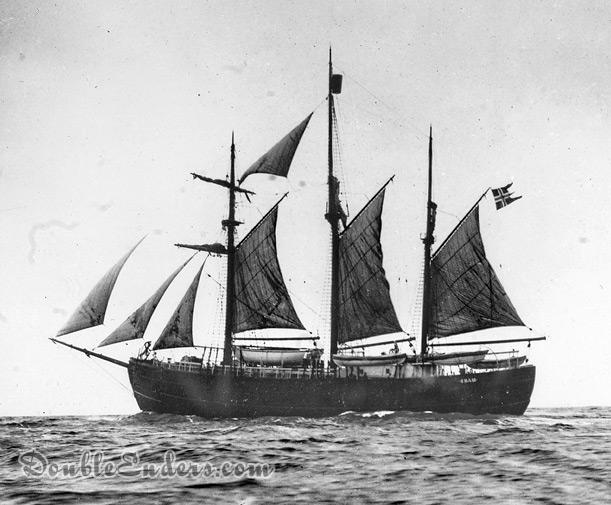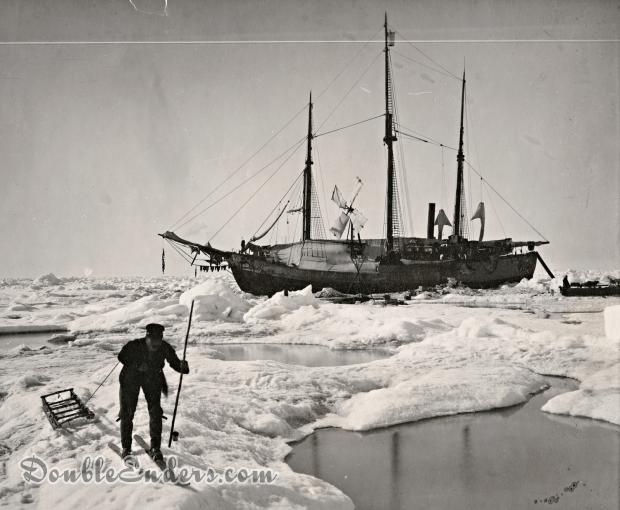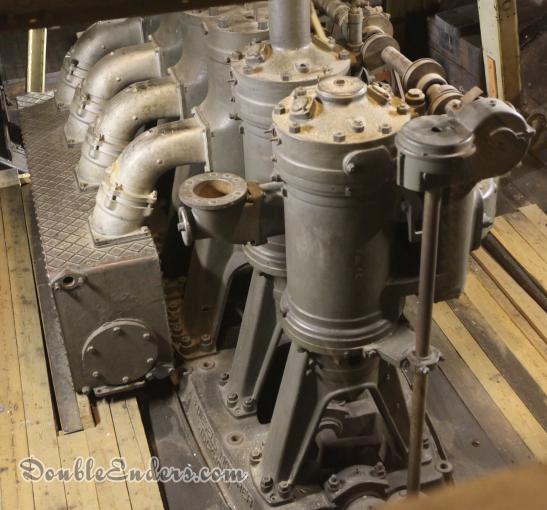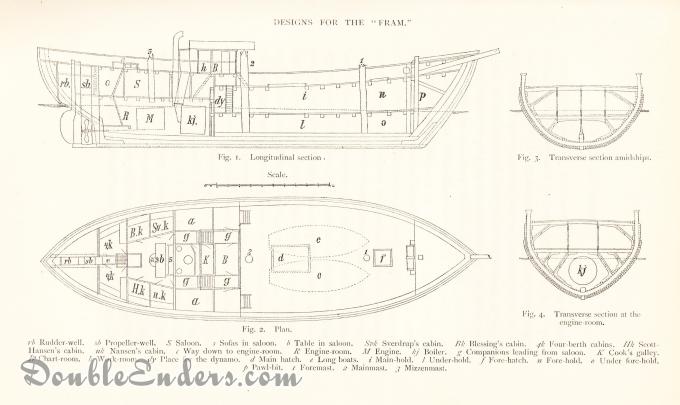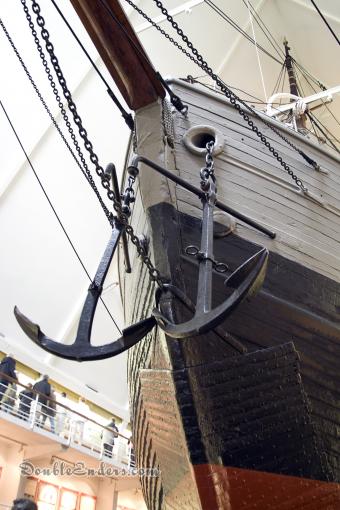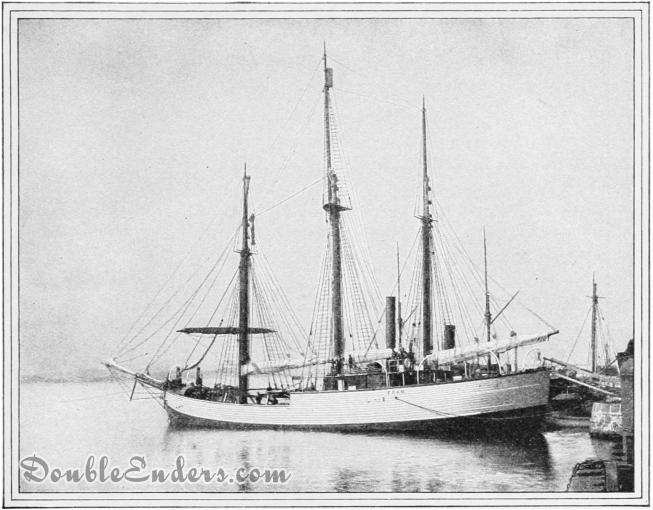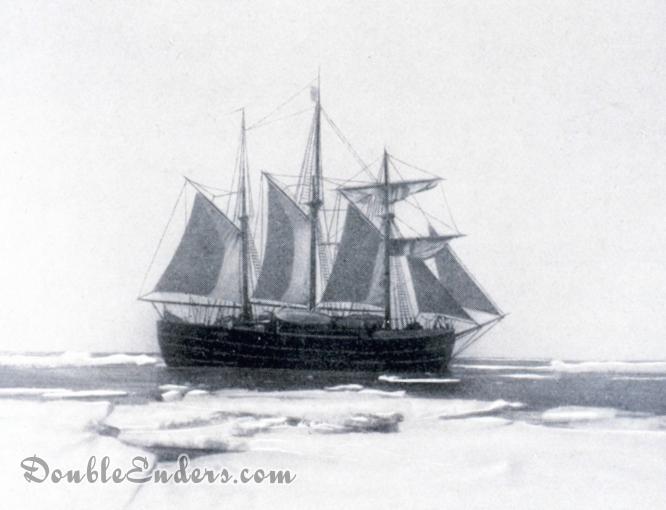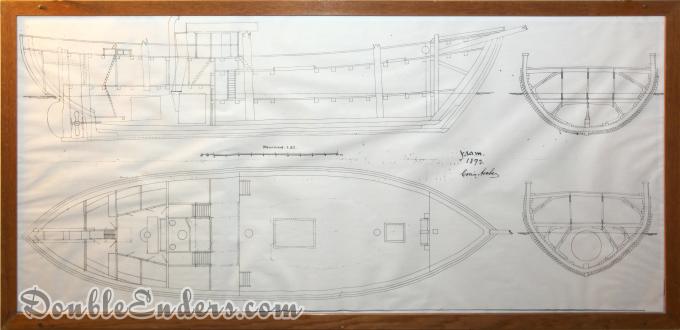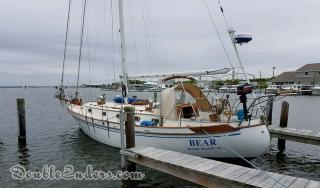Fram
The most successful polar expedition vessel of all time, Fram is a 39-meter, three-masted double-ended schooner. Colin Archer designed the vessel for Fridtjof Nansen’s 1893 Arctic expedition. Fram not only successfully carried that expedition across the Arctic, encapsulated in ice, but the boat also ferried Otto Sverdup’s Canadian Arctic islands expedition and Roald Amundsen’s legendary South Pole conquest. Over the course of its travels, Fram sailed farther north, to 85.57’N, and farther south, to 78.41’S, than any other wooden ship. Today, Fram is “preserved” at the Fram Museum in Oslo, Norway.
Henrik Mohn of the Norwegian Meteorological Institute argued that there was an east-west current across the Artic. Mohn’s main evidence came from the remains of the Jeannette. The Jeannette, commanded by George W. De Long, comprised the U.S. Arctic Expedition. The vessel had broke up in the ice off Siberia in 1881 after having been entrapped for the last two years chasing another Arctic theory, of a warm water route to the pole. Three years later, remains of Jeannette had turned up on the Greenland coast for to the west.
Fridtjof Nansen, a Norwegian zoologist and explorer who had peviously made a daring overland crossing of Greenland, read Mohn’s theories. Interested in reaching the North Pole, Nansen developed a plan to use the theoretical current to his advantage, pushing his well-provisioned ship slowly across the Arctic, near or over the North Pole, and on to Greenland. One of the keys to this plan was the design of his ship: a shallow-draft, impressively strong vessel that would essentially float atop the ice rather than be crushed within it. As Nansen later said about the doubleender, it could “slip like an eel out of the embraces of the ice.”
Though other Arctic experts and experienced polar explorers dismissed the plan as dangerously foolish, Nansen gained funding from the Norwegian government. At the same time, Colin Archer’s pilot boat designs made headlines rescuing, in winter gales, fishing boats off Norway. These successes pushed the Norwegian Society for Sea Rescue to order the first Redningsskoyte design from Archer in 1892. And, Nansen unsurprisingly turned to his fellow Norwegian to design the craft for his upcoming Arctic expedition.
Archer made sure the ship was as strong as Nansen hoped and then some. Coming in at 800 tons of displacement, 39 meters long, 11 meters wide, and with a 5 meter draft, it was considerably larger than Nansen had imagined. But she was sturdy. Double oak ribs, bolted together were laid 5 centimeters apart. Two layers of oak made up the hull with a greenheart - the strongest wood available - outer layer on top of that to ward off the ice.
Other design modifications protected key systems, like the retractable rudder and propeller. Still other decisions kept the crew comfortable, such as adding extra insulation: pitch pine covered with tarred felt and three layers of panelling. Archer, Nansen, and Otto Sverdrup, who helped with the design and outfitting of the vessel, also included a steam engine for propulsion and a windmill to power a generator for the electric lights.
Christened Fram by Nansen’s wife, Eva, the yard launched the vessel on October 26,1892.
Setting off from Christiana (now Oslo) on June 24, 1893, Fram, Nansen, and the other twelve members of the expedition made their way eastward to Siberia during the summer months. Finally, on November 19th Fram entered the ice. A year later, still ensconced in the ice and making slow progress to the north and west, Nansen decided to take a shot at the pole with dogs and sledges the following summer. Leaving Fram on March 14, 1895, with Hjalmar Johansen, Nansen planned to reach the pole and return to Franz Josef Land by the end of summer. At the same time, Fram and the rest of the members of the expedition, under the command fo Sverdrup, continued icebound, slowly drifting towards Spitsbergen.
Though Nansen and Johansen ended up reaching 86’13’6” N, the highest latitude of any expedition to date, a slow pace and not enough food turned the pair back in early April. Eventually, after wintering over in a cave near Franz Josef Land, the men encountered the British explorer Frederick Jackson at Cape Flora on Northbrook Island on June 17, 1896. While making their way back to Norway, Nansen and Johansen received word that Fram had emerged from the ice near Spitsbergen. The entire expedition party reunited shortly thereafter at Tromso (o with a slash through it) and made a triumphant return to Christiana.
Though Nansen retired from expeditionary travel, Sverdrup followed up the North Pole attempt with an exploration of the Canadian Arctic Archipelago aboard Fram. Before they departed, Archer affected some changes to the vessel. He added a false keel to provide some additional stability and improve performance on the wind. Further, Archer made two major alterations - adding an upper deck and removing the deckhouse - that combined to greatly increase the living space below. Three new cabins as well as a saloon, larger galley, workshop, and lab all dramatically transformed life aboard.
With the extra living space, the scientific expedition of 17 men departed on June 24, 1898. Though never as well-known as the other two expeditions aboard Fram, Sverdup’s trip also proved successful. Eventually returning in 1902, the group charted over 260,000 square kilometers, which exceeded the total of any other Arctic voyage.
After Sverdup’s trip, Fram sat for the next several years. Although the Norwegian government owned Fram, with Nansen’s reputation and personal connection to the ship, he had control of her. Nansen considered mounting an Antarctic expedition, but that never came to pass. And, in 1907, Nansen informed Roald Amundsen, who had previously approached Nansen, that he could use the vessel.
Amundsen’s goal, announced in 1908, was to sail Fram around Cape Horn and on to Alaska. There, like Nansen had, he would ensconce the ship in the ice and drift over the entire Arctic. The mission would collect a great deal of scientific and geographic information, but Amundsen also hoped to claim the pole.
As funding poured in from the Norwegian people, royal family, and government, Fram underwent a complete refit at the naval shipyard at Horten, Norway. The biggest change to Fram this time came when Amundsen elected to replace the original steam engine with a 180 hp diesel engine.
While preparations were underway, news broke that both Frederick Cook and Robert E. Peary had reached the North Pole in separate expeditions. Though Amundsen recognized that “if the expedition was to be saved…there was nothing for me but to try and solve the last great problem - the South Pole.” However, Amundsen had solicited funds based on the expectation that he would be engaged in Arctic exploration, which was of more practical and economic interest to Norway. Moreover, the British explorer Robert Scott was mounting an Antarctic campaign; not only might a Norwegian attempt at the southern pole upset Norwegian-British relations, but Amundsen and Scott had been friendly, sharing advice and good wishes for their separate endeavors and planning to mount a joint study of the respective ends of the earth. For these reasons, Amundsen kept his change of plans secret from his backers and his crew, only letting his brother, Leon - who was handling fundraising and shore-side logistics - and Thorvald Nilsen - his second in command - in on the revised goals.
On August 9, 1910, Amundsen and Fram finally set sail. Their first stop was Funchal, Madeira. At that point, Amundsen let the rest of the crew in on the new objective. He also gave each member of the expedition the opportunity to depart. All stayed and supported the change in destination.
Several months later, Fram arrived at the Bay of Whales, sixty miles closer to the pole than Scott’s base camp and the furthest south that any ship had been. Amundsen went about establishing depots inland that would help ease the way to and from the pole. And, he sent Fram, with Nilsen in command, to Buenos Aires for a resupply.
Eventually, of course, Amundsen achieved the pole, arriving a few weeks before Scott, whose part died returning across the ice. Since the achievement, there has been a great deal of speculation as to why Amundsen succeeded where Scott failed. Amundsen’s flexible leadership probably made some difference. But much of the credit can also be given to his choice of conveyance. Whereas Scott relied on mechanical sledges that proved ineffective in the harsh Antarctic conditions, Amundsen used the traditional dog and sledge setup that had been so effective in the extreme northern for centuries. Amundsen also unsentimentally thinned the number of dogs to reduce necessary supplies, weed out the weak, and provide food for the party.
As Amundsen claimed the pole, Nilsen used Fram as a base for oceanographic studies after sailing for Buenos Aires. The studies of a great swatch of ocean between Africa and South America added significantly to the scientific knowledge the expedition collected. And when Amundsen returned to base camp, deemed Framheim by the group, he hurriedly loaded the men and supplies aboard and set sail for Hobart. Amundsen wanted to ensure he let the world know of their achievement before Scott had an opportunity to. On March 7, 1912, Fram reached Tasmania, informed the world of his success, and also found that no word had yet been heard from Scott’s expedition.
- Log in or register to post comments

